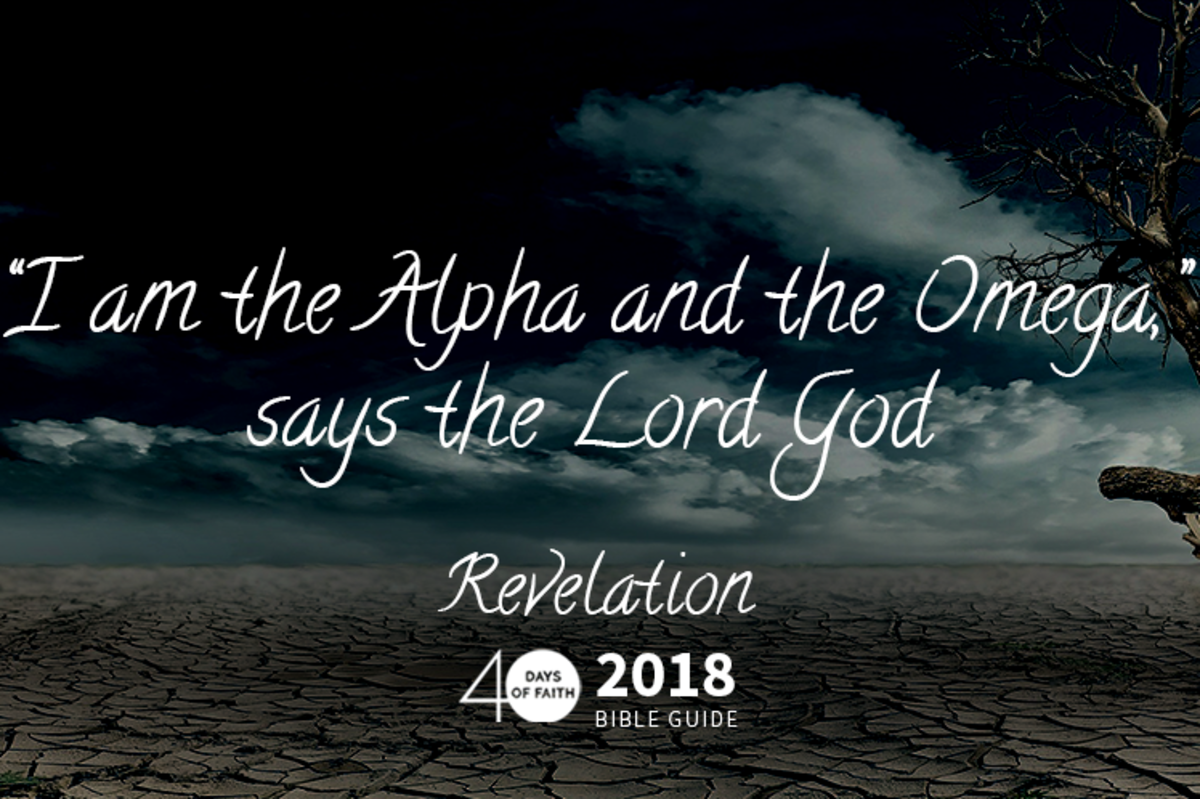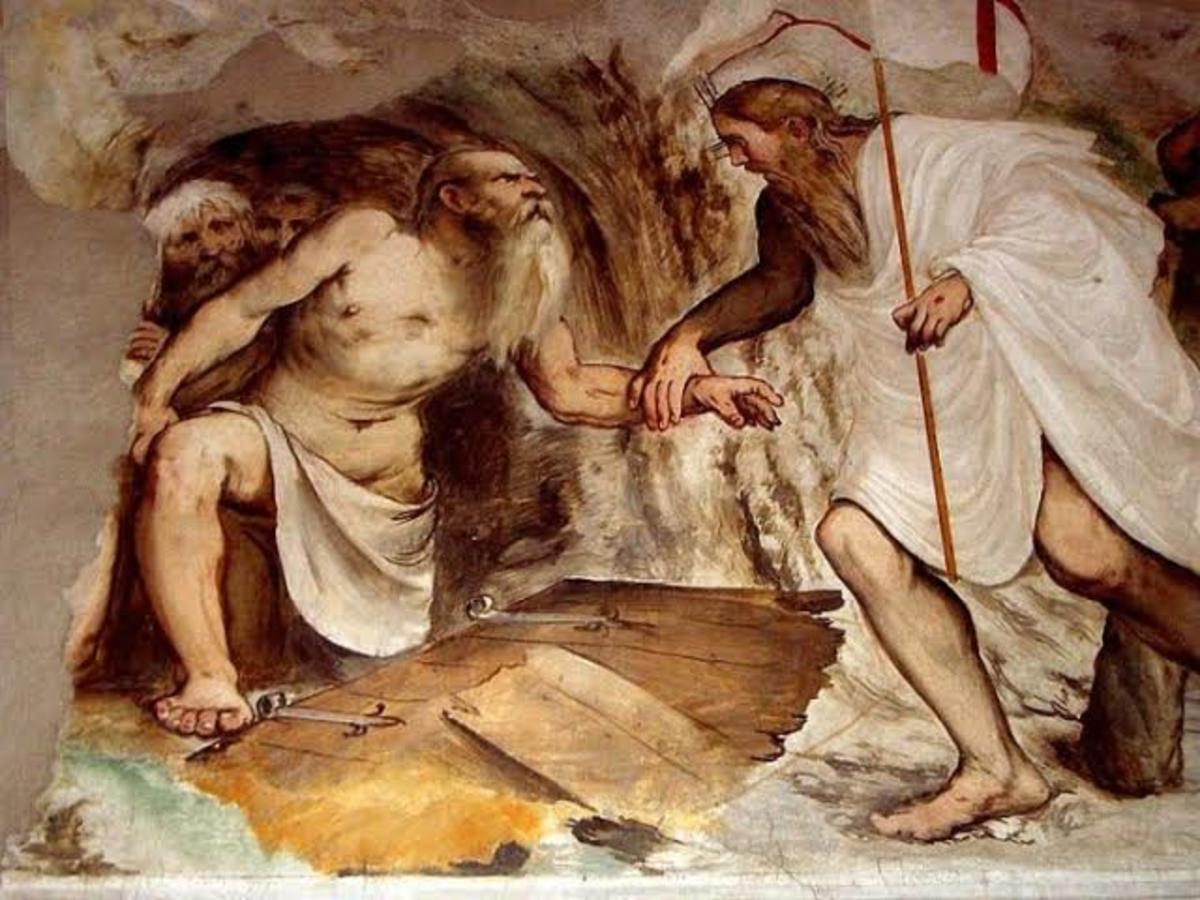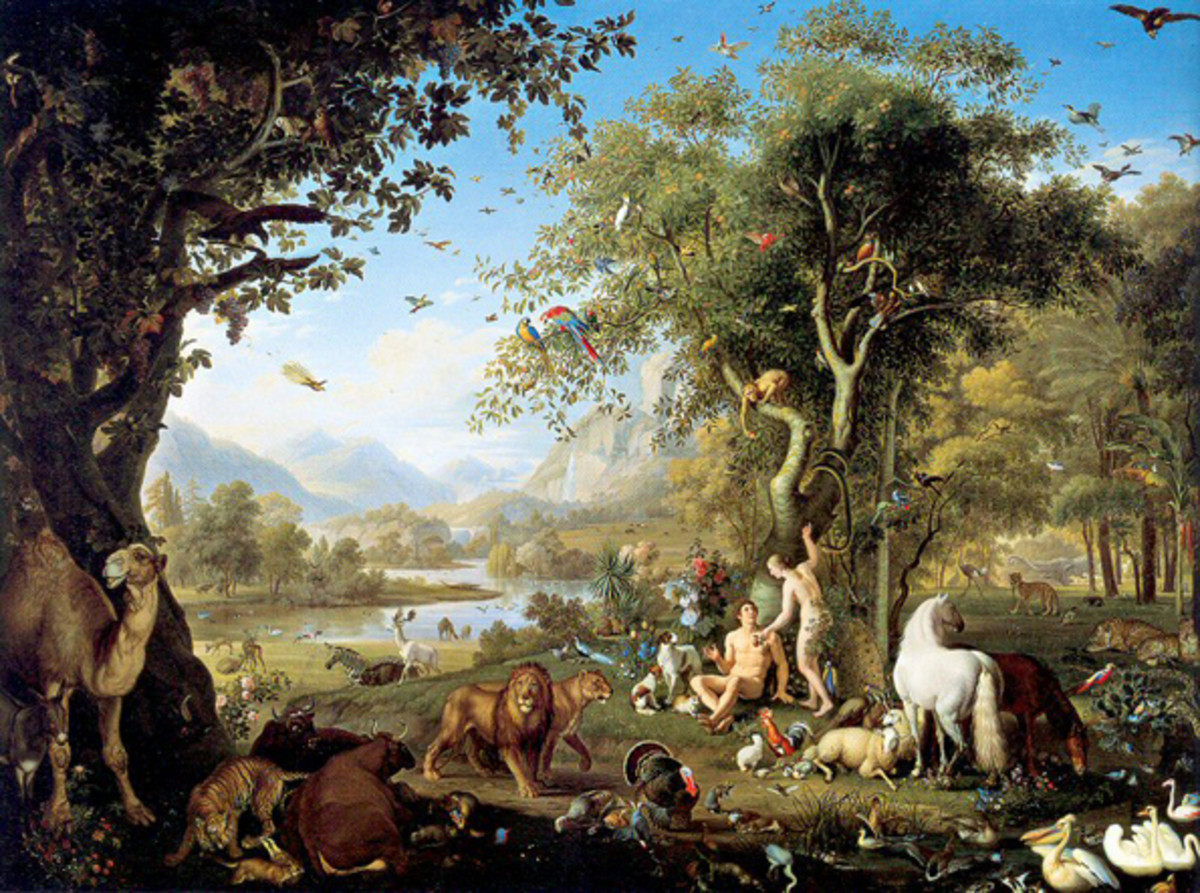The Deification of Jesus Christ

Jesus is the I AM
In the Old Testament, God revealed His identity to Abraham and Moses as “I AM.” In the Gospel of John, we see Jesus as the great “I AM” or the Word of God Incarnate. From the beginning, God planned to become flesh and to become human. This plan was fulfilled with the birth of Jesus Christ. Throughout John’s Gospel we witness the deification of Jesus Christ revealed to the world in the form of the “I AM” discourses, His miracles and signs, and through the Resurrection. Jesus Christ is able to preach as “one with authority” because He has seen God; because He was part of creation; and more importantly, because He is God.
THE PROLOUGE
“In the beginning was the Word, and the Word was with God, and the Word was God. He was with God in the beginning.”[1] With this introduction, the Johannine gospel introduces the reader to Jesus as the Word incarnate who was with the Father prior to the existence of the world. This perspective allows the author to focus not only on what Jesus did during His time on earth, but also seeks to offer an explanation as to why Jesus has the authority to speak on behalf of God, the Father. Jesus was granted this authority because he is “God’s word and work in the world and John bears witness to the gift that God gives the world in the incarnate Jesus.”[2]
In contrast to the gospels of Matthew, Mark, and Luke, John’s gospel does not open with the angelic announcement of Jesus’ impending birth nor does John dwell on the events of Jesus’ physical birth. Instead, John chooses to introduce Jesus as the Word. While this approach may seem odd in comparison to the Synoptic Gospels, the terminology is quite significant for several reasons. In Johannine literature, the Word can be interpreted into the Greek “logos” or “the Word became flesh.”[3] John is establishing Christ’s eternal presence. Jesus was present at creation’ therefore He was part of God’s plan of salvation from the beginning.
Turid Karlsen Seim extensively researched the question of Divine Paternity in the Gospel of John. The Father-Son relationship is emphasized in the fourth gospel with no allusion to the virgin birth, a central concept to the Christian doctrine. Siem points out that the absence of the virgin birth is an attempt to stress the fact that Jesus is “from above.” According to Siem, “The mother is being employed to frame the earthly story of Jesus to which she belongs, and she has no role beyond that.”[4] The important fact to remember is that Jesus was born and became flesh. To focus on human functions like a physical birth could, at times, detract from the spiritual imagery that John is trying to convey to the reader. Therefore the Prologue to the Gospel of John seeks to establish the theme of divinity that will reinforce the revelation of Jesus’ true identity.
THE “I AM” DISCOURSES
“God said to Moses, ‘I AM WHO I AM.’ This is what you are to say to the Israelites: ‘I AM has sent me to you.”[5] With these words, God revealed to Moses and the nation of Israel His true identity. According to Mays, “I am who I am belongs to a category of expressions designated idem per idem, used in biblical Hebrew and related languages to refer to gods. In one way or another they stress divine freedom, majesty, and mystery.”[6] Since the Jewish people knew that the name for God was “I AM,” the use of these same words in the seven “I AM” discourses was, in a way, Jesus act of revealing His true identity to the Jews and to the world for that matter. In John, 8:58 “Jesus says, “Very truly, I tell you, before, Abraham was, I am.”[7] Although simple but powerful metaphors, Jesus is able to convey with these words that He is the true way to eternal life. .
In John 8: 12, Jesus states “I am the light of the world. Whoever follows me will never walk in darkness but will have the light of life.”[8] Jesus makes this revelation soon after the celebration of The Feast of Booths. In this analogy, Jesus contrasts the principles of “light” and “dark.” However, this statement does not mark the first appearance of these two contrasting elements. John 1: 4 states, “In him was life and the life was the light of all people. The light shines in the darkness and the darkness did not overcome it.”[9] The concept of light overcoming darkness is, in a sense, a contrast between good and evil. Jesus’ mission on earth was to overcome evil. This mission was fulfilled through His death, burial and resurrection. According to The New Interpreter’s Study Bible, “Light is a common symbol of the presence of God and was also an important part of the Tabernacles celebration; with this I AM saying Jesus declares himself to be the fulfillment of the joy of the Feast of Tabernacles.”[10]
In John 6: 35, Jesus tells his followers, “I am the bread of life, He who comes to me will never go hungry, and he who believes in me will never be thirsty.”[11] Jesus makes this revelation shortly after feeding the Five Thousand. Bread was a staple in the New Testament period. It represented life and without it many would starve. To the Jewish people, bread represented the manna that came from heaven whenIsrael was in the wilderness (6:31). Therefore, manna was considered the “bread of life.” For Jesus to equate his existence with manna is another way for Christ to exemplify His deification.
The revelation of the deities of Jesus as “the gate” and the “the way, the truth, and the life” correspond to Jesus as the way to eternal life. Once again Jesus exudes the image of salvation. In the discourse that establishes Jesus as the “way to the father,” various critics refer to this discourse s the “Farewell Discourse.” The other three Gospels do not include such a lengthy discourse. However, these words are very important. “John 14:6 expresses the central theological conviction of the Gospel of John: Jesus is the tangible presence of God in the world (1:1-18). The language of Father and Son points to the intimacy of the relationship between god and Jesus. Jesus. Humanity’s encounter with Jesus the Son makes possible a new experience of God as Father.”[12]
In John 15: 1, Jesus says “I am the true vine, and my Father is the vine grower.”[13] With these words, Jesus illustrates the direct connection that He has with the Father as well as the connection that He has to Christians everywhere. Within these verses we are commissioned to “Abide” in Christ. In this context, the word “Abide’ “expresses the central theme of chapter 15: The relation ship of God and Jesus with one another and with the community is one of presence and mutuality. In the book, Secrets of the Vine, Bruce Wilkinson states, “Abiding is all about the most important friendship of your life. Abiding doesn’t measure how much you know about your faith or your Bible. In abiding, you seek, long for, thirst for, wait for, see, know, love, hear and respond to…a person. More abiding means more of God in your life, moreover Him in your activities, thoughts, and desires.”[14]
In John 10:11, Jesus states, “I am the good shepherd.”[15] In this image, Jesus seeks to establish the relationship between the sheep and the shepherd and establishes his willingness to die for his sheep. With the discourse, John reveals “Jesus’ death as the ultimate expression of the love relationship that exists between God and Jesus.”[16] This discourse, especially, reveals the love that God the Father has for his children, the sheep. Only the Word Incarnate could understand the relationship between “taking care of sheep” and fulfilling God’s promise of salvation.
THE MIRACLES AND SIGNS
The second way that the deity of Jesus is revealed through the Gospel of John is the miracles and signs that are recorded in the fourth gospel. John only recorded eight of Jesus signs or miracles which include, turning the water into wine, healing the official’s son, the healing atBethesda, feeding the 5,000, walking on the water, giving sight to the blind, raising Lazarus from the dead, and the disciples catch at the end of the book.
In John 20: 30-31, we read that “Jesus did many other miraculous signs in the presence of his disciples, which are not recorded in this book. But these are written that you may believe that Jesus is the Christ, the Son of God, and that by believing you may have life in his name.”[17] According to Lea and Black, “John’s Gospel includes and emphasis on ‘signs.’ In John’s terminology a sign is a miracle, a supernatural event that points to Jesus’ divine origin.”[18] Critics believe that this statement could mean that “you may come to faith” or “come to believe.” Other critics believe that the statement could mean “to continue in faith” or “continue to believe.” According to Carson and Moo, “This impression confirmed by the firm syntactic evidence that the first purpose clause in 20:31 should be rendered ‘that you may believe that the Christ the Son of God, is Jesus.’ Thus the fundamental quest on the fourth gospel addresses is not ‘Who is Jesus?’ but ‘Who is the Messiah, the Christ, the Son of God?’” [19] John, after all, was an eyewitness event to the miracles and signs of Jesus. Therefore, he only had to record several signs that would reveal the divine nature of Christ.
THE RESSURECTION
Perhaps the greatest sign of Jesus’ true identity was the Resurrection. There is little unity between the four gospels as they deliver their respective accounts of the Resurrection. According to Lea and Black, “The variety of details points to the opinions of several eyewitnesses and shows us that the Gospel writers made no effort to present a unified report. This fact provides a firmer basis for believing the truthfulness of the report.”[20]
On an added note, John’s account of the resurrection reveals that many of Jesus’ promises from the Farewell Discourse are fulfilled.[21] Jesus has overcome death and perhaps this achievement is the greatest revelation of the true identity of Christ. In the verses that follow, “Jesus’ ascent and return to the Father enables the disciples to share fully in his relationship with God.”[22] It is important for us to realize that the resurrection was the factor that changed the disciples into church leaders. Until this point, despite all of Jesus’ teachings signs and miracles, the apostles still had there doubts.
CONCLUSION
While it is true that each Gospel seeks to offer a different view of Jesus, the Gospel of John fulfills the author’s purpose of revealing the true divine nature of Jesus. Only someone with an intimate relationship with the Father could have taught with such authority. While Jesus’ claims to be equal with the Father sealed his fate with the Jewish leaders, these words leave Christians today with beautiful images of Jesus as our shepherd and our way to eternal life. It is only through Jesus that we can achieve eternal life. When I read these passages, I am able to see the truth. I can only ask myself why the Pharisees and Sadducees could not or would not see that Jesus was truly the Word Incarnate.
[1] Life Application Study Bible: New International Version (1991). Grand Rapids: Zondervan.
[2] The New Interpreters’ Study Bible: New Revised Standard Version with the Apocrypha. (2003).Nashville: Abington Press.
[3] Paul J. Achtemeier (1985). Bible DictionarySan Francisco: Harper Collins.
[4] Tutid Karlsen Seim, (2005). “Descent and Divine Paternity in the Gospel of John: Does the Mother Matter” New Testament Studies 51 p. 361-375.United Kingdom: Cambridge Press.
[5] Life Application Study Bible: New International Version
[6] James L. Mays, Bible Commentary.
[7] The New Interpreter’s Study Bible: Revised Standard Version
[8] IBID
[9] IBID
[10] IBID
[11] Life Application Study Bible: Revised Standard Version
[12] The New Interpreters Study Bible: Revised Standard Version
[13] IBID
[14] Bruce Wilkinson (2001). Secrets of the Vine.Oregon: Multnomah Publishers
[15] The New Interpreters Study Bible: Revised Standard Version
[16] IBID
[17] Life Application Study Bible: New International Version
[18] Thomas D. Lea & David Alan Black (2003) The New Testament: Its Background and Message. Nashville: Broadman & Holman
[19] D.A. Carson & Douglas J. Moo (2005). An Introduction to the New Testament.Grand Rapids, Zondervan.
[20] Lea & Black. The New Testament: It’s Background and Message
[21] The New Interpreter’s Study Bible: Revised Standard Version
[22] IBID










